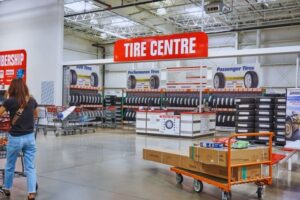When it comes to getting new tires, many drivers wonder whether they need to get an alignment as well.
The answer to this question depends on a number of factors, including the condition of your vehicle’s suspension, your driving habits, and the type of tires you’ve purchased.
In general, however, it’s a good idea to get an alignment after installing new tires to ensure that your vehicle handles properly and your tires wear evenly.
One of the main reasons to get an alignment after installing new tires is to prevent uneven tire wear.
When your wheels are out of alignment, they can cause your tires to wear unevenly, which can lead to a number of issues, including reduced handling, decreased fuel efficiency, and a shorter lifespan for your tires.
By getting an alignment after installing new tires, you can ensure that your wheels are properly aligned and your tires wear evenly, which can help you get the most out of your investment.
Another reason to get an alignment after installing new tires is to improve your vehicle’s handling.
When your wheels are properly aligned, your vehicle will handle better, which can help you stay safe on the road.
Proper alignment can also reduce steering wheel vibration, which can make your drive more comfortable.
So, if you’ve recently installed new tires, it’s a good idea to schedule an alignment to ensure that your vehicle is performing at its best.
Understanding Tire Alignment
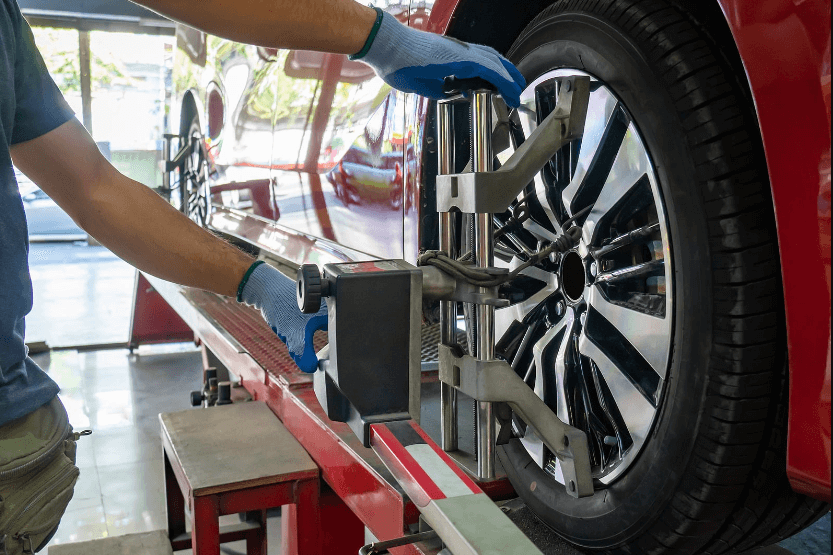
Tire alignment, also known as wheel alignment, refers to the adjustment of the suspension system of a vehicle to ensure that the wheels are perpendicular to the ground and parallel to each other. Proper alignment is crucial for optimal tire wear, improved vehicle handling, and increased safety.
There are three main alignment angles that need to be adjusted: caster, camber, and toe. Caster angle refers to the angle of the steering axis when viewed from the side of the vehicle. Camber angle is the inward or outward tilt of the top of the tire when viewed from the front of the vehicle. Toe angle is the angle between the longitudinal axis of the wheels and the centerline of the vehicle.
Improper alignment can cause uneven tire wear, reduced fuel efficiency, and compromised safety. For instance, if the camber angle is too far inward or outward, it can cause excessive wear on the inside or outside of the tire, respectively. Similarly, if the toe angle is not set correctly, it can cause the tires to scrub against the road surface, resulting in uneven wear.
Suspension geometry, such as worn ball joints, tie rods, or control arm bushings, can also affect alignment. Therefore, it is essential to have the suspension system inspected regularly to ensure that it is in good condition.
It is recommended to get an alignment at the same time as purchasing new tires or as soon as possible to ensure optimal tire wear and vehicle handling. Delaying this can lead to uneven tire wear, reduced fuel efficiency, and compromised safety.
Signs of Misaligned Tires
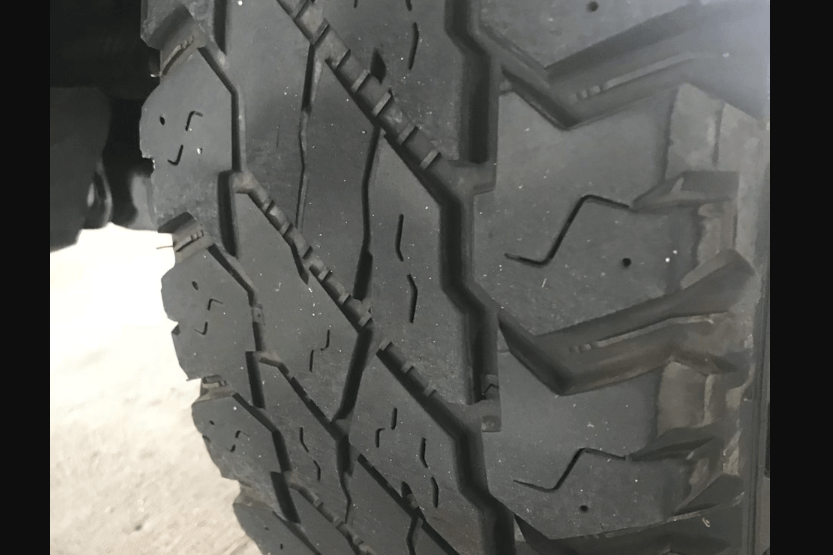
If a vehicle’s tires are misaligned, it can cause several issues that can affect the performance and safety of the vehicle. Here are some common signs that indicate misaligned tires:
Steering Wheel Off-Center
One of the most noticeable signs of misaligned tires is when the steering wheel is not centered when driving straight. If the steering wheel is off-center, it means that the wheels are not pointing in the same direction, which can cause the vehicle to pull to one side.
Pulling to One Side
If a vehicle pulls to one side while driving, it can be a sign of misaligned tires. This can happen when the wheels are not aligned properly, causing uneven wear on the tires and affecting the vehicle’s handling.
Vibration
Another sign of misaligned tires is when the vehicle vibrates while driving. This can happen when the tires are not aligned properly, causing uneven wear and tear on the tires and affecting the vehicle’s stability.
Uneven Tire Wear
Misaligned tires can cause uneven wear on the tires, which can result in the need for premature tire replacement. If the tires are wearing unevenly, it can also affect the vehicle’s handling and stability.
If any of these signs are present, it is important to have the vehicle’s tires aligned as soon as possible to avoid further damage to the tires and the vehicle. It is recommended to get an alignment at the same time as purchasing new tires or as soon as possible to ensure optimal tire wear and vehicle handling. Delaying this can lead to reduced fuel efficiency and compromised safety.
Why Alignment Matters
Alignment is an essential aspect of vehicle maintenance that should not be ignored, especially after purchasing new tires. Misaligned tires can lead to a variety of problems, including uneven wear, reduced fuel efficiency, compromised safety, and poor handling.
When tires are not aligned correctly, they may wear unevenly, which can lead to premature replacement and increased costs. Uneven tire wear can also affect handling and stability, making it more difficult to control the vehicle in certain situations. This can be particularly dangerous in emergency situations where quick reactions are necessary.
In addition to uneven wear, misaligned tires can also cause reduced fuel efficiency. When tires are not aligned correctly, the vehicle has to work harder to move forward, which can result in increased fuel consumption. This can be a significant issue for those who drive frequently or for long distances.
Moreover, misaligned tires can compromise safety. If the vehicle is not handling correctly, it can be more challenging to control in certain situations, such as when braking or turning. This can be particularly dangerous in wet or slippery conditions where the vehicle’s handling is already compromised.
When to Get an Alignment

After purchasing new tires, it is important to get an alignment check. The general recommendation is to get an alignment check once a year, but it is best to consult the owner’s manual for specific recommendations for your vehicle.
If you frequently drive on rough roads or encounter potholes, you may need an alignment more frequently. Additionally, if you experience any of the following symptoms, it is recommended to get an alignment check:
- The steering wheel is off-center
- The vehicle pulls to the left or right when your hands are off the steering wheel
Some tire shops may not offer alignment services, so it is important to schedule an appointment with a reputable mechanic who can perform the necessary maintenance.
When getting new tires, it is also important to consider whether to get an alignment before or after the new tires are mounted. Some shops may not offer alignment services at the same time as mounting new tires, so it may be necessary to make a decision on whether to get an alignment before or after purchasing new tires.
In general, it is recommended to get an alignment after getting new tires installed. This ensures that the tires wear evenly and prolongs the lifespan of the tires. However, if the vehicle has not had an alignment check in a while, it may be necessary to get an alignment check before purchasing new tires to ensure that the vehicle is properly aligned.
Two-wheel Vs Four-wheel Alignment
When it comes to wheel alignment, there are two main types: two-wheel alignment and four-wheel alignment. As the names suggest, two-wheel alignment involves adjusting the front wheels, while four-wheel alignment involves adjusting all four wheels.
Two-wheel alignment is also known as front-end alignment, as it only focuses on the front wheels. This type of alignment is suitable for vehicles that have a solid rear axle or a beam axle, such as trucks and older cars.
On the other hand, four-wheel alignment, also known as all-wheel alignment, is suitable for vehicles that have independent suspensions, such as most modern cars. This type of alignment adjusts all four wheels, ensuring that they are all pointing in the same direction and are perpendicular to the ground.
While two-wheel alignment is cheaper and quicker than four-wheel alignment, it may not be suitable for all vehicles. If a vehicle has a four-wheel drive or an all-wheel drive system, it is important to get a four-wheel alignment to ensure that all four wheels are aligned correctly.
In general, it is recommended to get an alignment at the same time as purchasing new tires or as soon as possible to ensure optimal tire wear and vehicle handling. Delaying this can lead to uneven tire wear, reduced fuel efficiency, and compromised safety.
Overall, the type of alignment required depends on the type of vehicle and its suspension system. It is important to consult a professional mechanic to determine which type of alignment is best suited for your vehicle.
| Two-wheel alignment | Four-wheel alignment |
|---|---|
| Adjusts only the front wheels | Adjusts all four wheels |
| Suitable for vehicles with solid rear axles or beam axles | Suitable for vehicles with independent suspensions |
| Cheaper and quicker than four-wheel alignment | More expensive and time-consuming than two-wheel alignment |
| May not be suitable for vehicles with four-wheel or all-wheel drive systems | Recommended for vehicles with four-wheel or all-wheel drive systems |
Manufacturer’s Specifications and Alignment
When purchasing new tires, it’s important to follow the manufacturer’s specifications for alignment. This information can usually be found in the owner’s manual or on the tire manufacturer’s website. These specifications will vary depending on the make and model of your vehicle, as well as the type of tire you’ve purchased.
Following the manufacturer’s specifications for alignment will ensure that your tires wear evenly and last as long as possible. It will also help to improve your vehicle’s handling and performance, as well as its fuel efficiency.
In addition to following the manufacturer’s specifications, it’s also recommended to get an alignment as soon as possible after purchasing new tires. Delaying an alignment can lead to uneven tire wear, reduced fuel efficiency, and compromised safety.
It’s important to note that an alignment is not a one-time fix. Over time, your vehicle’s alignment can become misaligned due to normal wear and tear, hitting potholes, or other factors. It’s recommended to have your alignment checked at least once a year, or more frequently if you notice any handling issues or uneven tire wear.
Choosing Alignment Services
When it comes to choosing alignment services, there are a few things to keep in mind. First and foremost, it’s important to find a reputable service provider. This can be done by reading reviews online or asking for recommendations from friends and family.
One option for alignment services is tire shops. Many tire shops offer alignment services, and they may even have a package deal for new tires and alignment. However, it’s important to make sure that the tire shop has experienced technicians who can perform the alignment correctly.
Another option is Firestone Complete Auto Care. They offer a variety of services, including alignment, and have a reputation for quality work. They also offer a lifetime alignment warranty, which can be a great value for those who plan to keep their vehicle for a long time.
When choosing an alignment service, it’s important to consider the cost. Prices can vary depending on the provider and the type of alignment needed. It’s important to get a quote upfront and make sure there are no hidden fees.
How Proper Alignment Saves Money

Proper vehicle alignment is an essential maintenance item that saves drivers a significant amount of money over a vehicle’s lifetime. It is recommended to get an alignment at the same time as purchasing new tires or as soon as possible to ensure optimal tire wear and vehicle handling. Delaying this can lead to uneven tire wear, reduced fuel efficiency, and compromised safety.
When a vehicle’s wheels are not properly aligned, they will not be pointing in the same direction, causing the tires to wear unevenly. This can lead to premature tire replacement, which can be costly. By getting an alignment, drivers can ensure that their tires wear evenly, extending their lifespan and saving money in the long run.
Proper alignment also improves handling and performance, which can lead to better fuel efficiency. When a vehicle’s wheels are not aligned, it can cause the vehicle to pull to one side, requiring the driver to constantly correct the steering.
This can lead to increased fuel consumption and decreased gas mileage. By getting an alignment, drivers can ensure that their vehicle is operating at peak performance, saving them money on gas.
In addition to saving money on tire replacement and gas, proper alignment can also prevent costly repairs. When a vehicle’s wheels are not aligned, it can cause excessive wear and tear on other components, such as the suspension and steering system.
This can lead to costly repairs down the line. By getting an alignment, drivers can prevent these issues from occurring, saving them money on repairs.
To Summarize
In summary, getting an alignment after purchasing new tires is highly recommended to ensure optimal tire wear and vehicle handling. Delaying an alignment can lead to uneven tire wear, reduced fuel efficiency, and compromised safety.
According to TireGrades, it’s best to get an alignment at the same time as purchasing new tires or as soon as possible afterward. This will ensure that the wheels are correctly aligned and that the tires are making good contact with the road.
If it’s been a while since the last alignment, the mounting of new tires can be a good opportunity to address alignment, especially if the old, dismounted tires are showing signs of uneven wear. This will help ensure proper tire wear and full tire life for the new tires, as Tirebuyer explains.
Some tire shops may not offer alignment services, which forces the customer to decide whether to do it before or after mounting the new tires. As TireGrades points out, it’s important to align the wheels before mounting the new tires if possible. This will ensure that the tires are mounted onto perfectly aligned wheels, which can prevent uneven tire wear down the road.
In conclusion, getting an alignment after purchasing new tires is crucial for optimal tire wear, fuel efficiency, and safety. It’s best to get an alignment at the same time as purchasing new tires or as soon as possible afterward to ensure that the wheels are correctly aligned and that the tires are making good contact with the road.

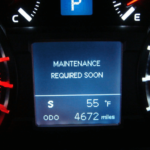
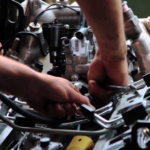



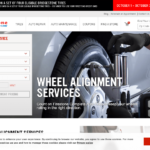
![Read more about the article How to Put Chains on Tires [Easy Steps]](https://roadsumo.com/wp-content/uploads/2022/01/how-to-put-chains-on-tires-300x200.jpg)

